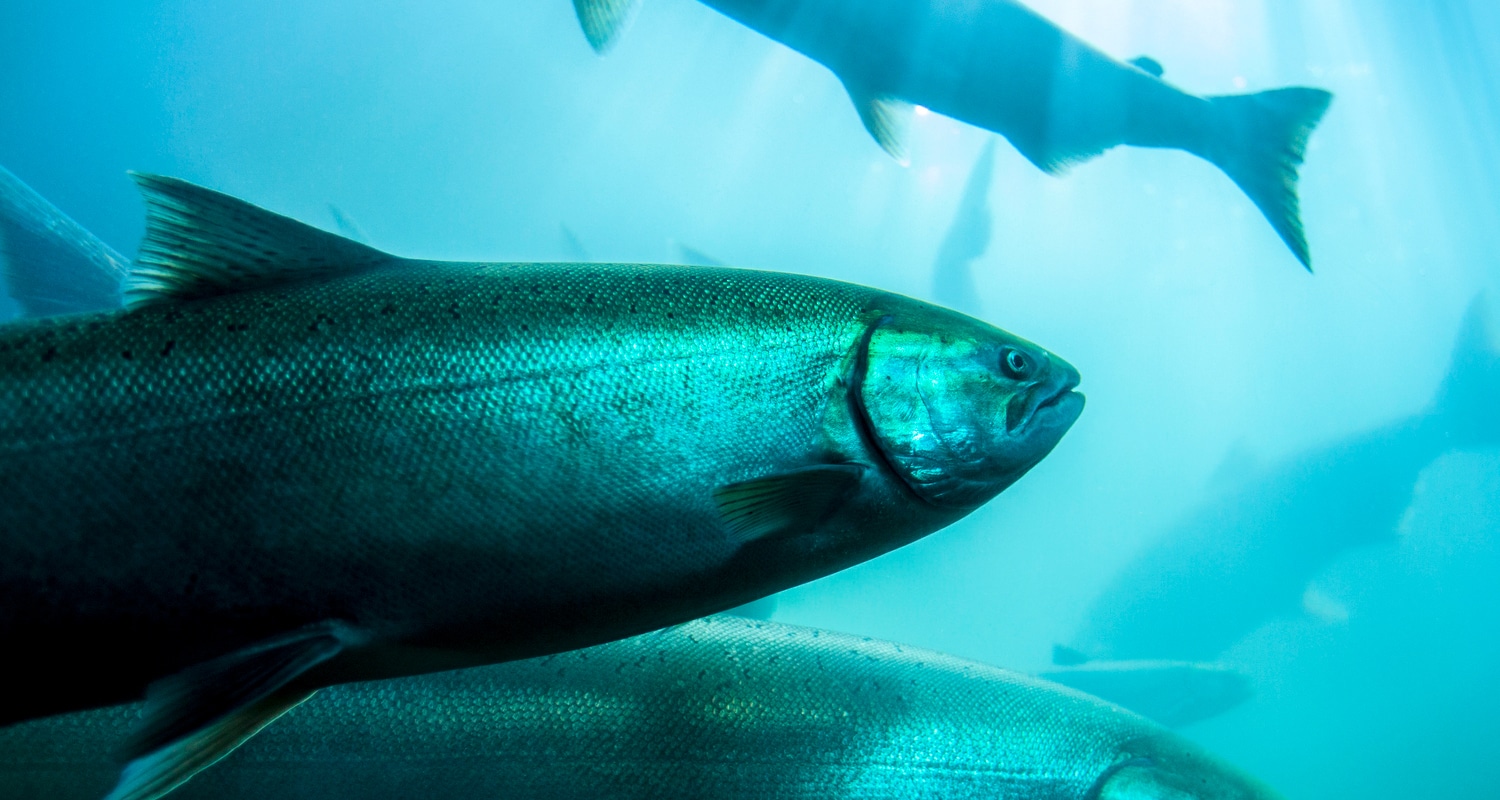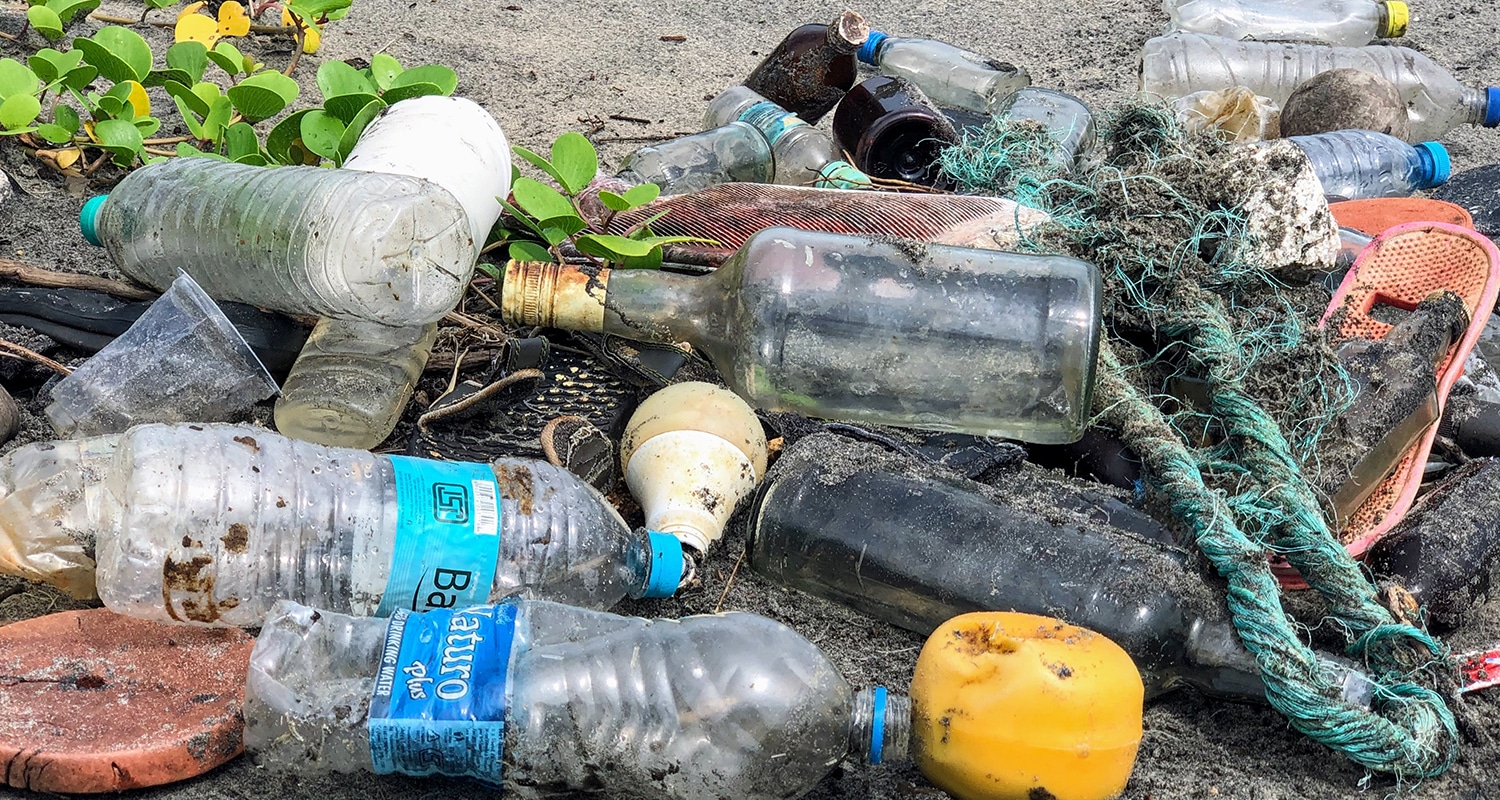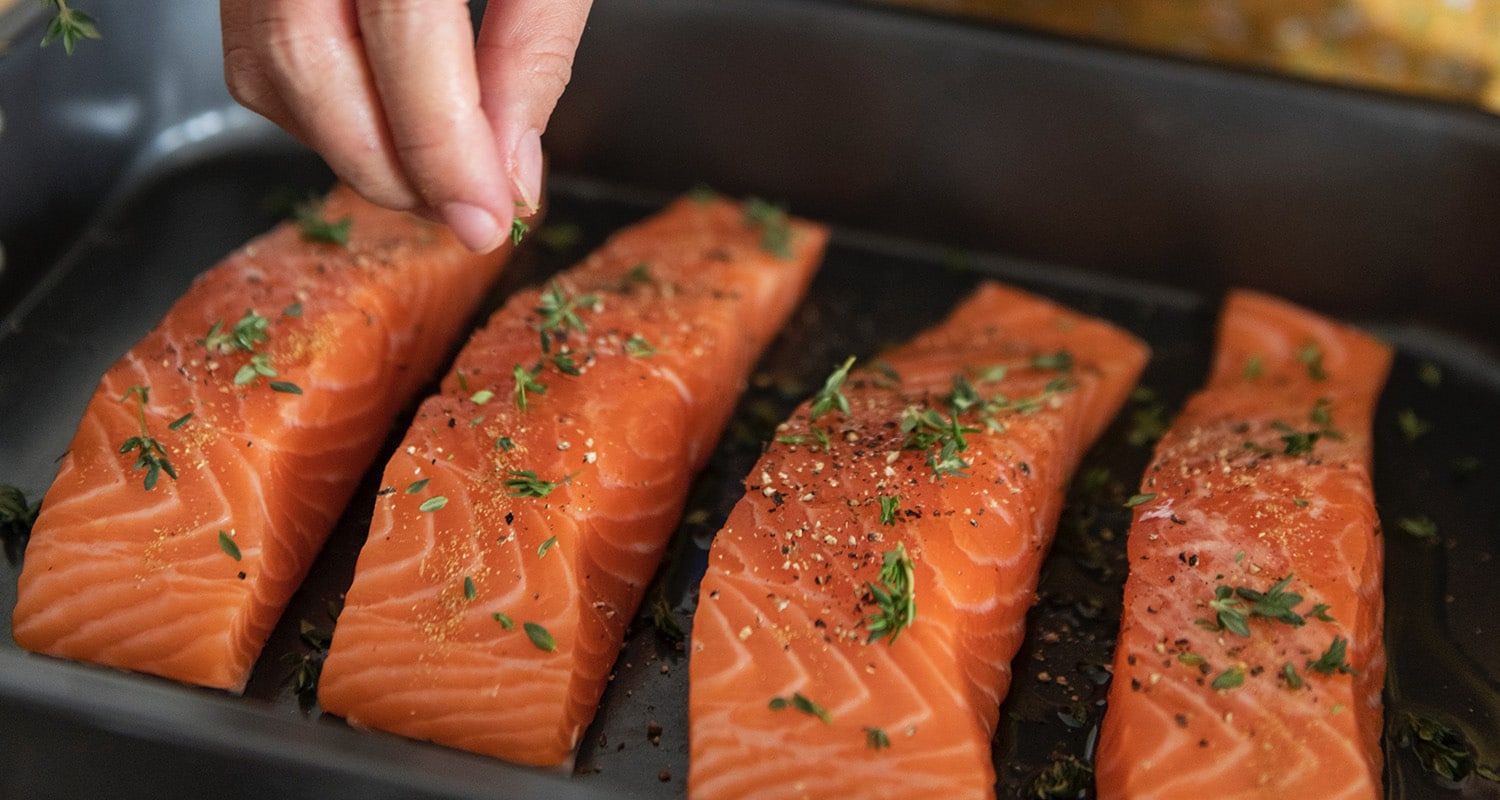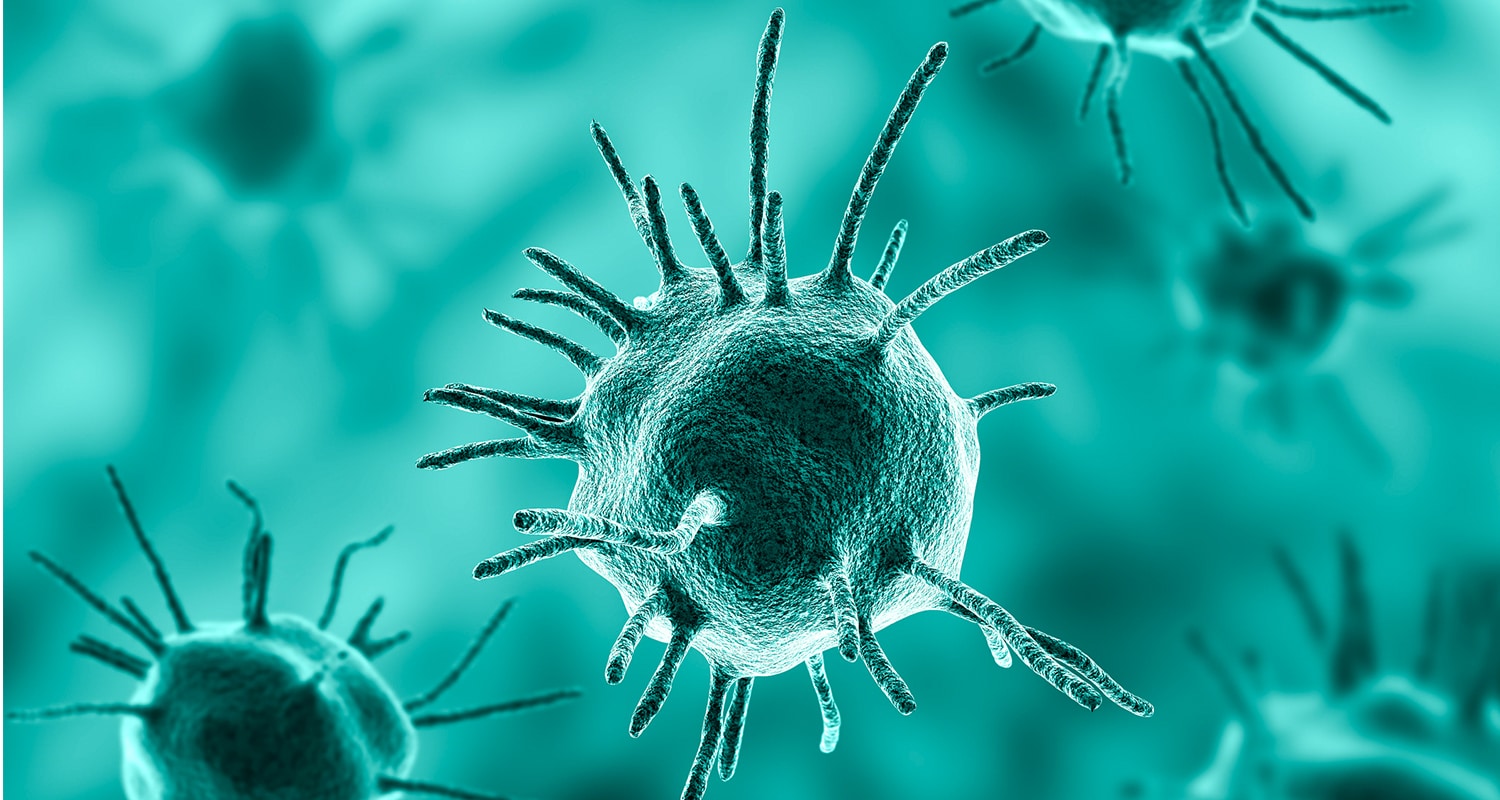
[tldr]
- Farm-raised salmon is more likely than wild-caught to contain contaminants, like carcinogenic dioxins and PCBs.
- Wild caught salmon has a healthier ratio of anti-inflammatory omega-3 fats to inflammatory omega-6 fats, as well as an overall better nutritional profile.
- Farmed salmon is not sustainable and may harm the environment by spreading disease to wild-caught fish and encouraging overfishing.
[/tldr]
Salmon has sealed its superfood status with its sky-high concentration of omega-3 fatty acids, so picking up a few filets on your next grocery run should be a no-brainer. But when you arrive at your fish counter, you may face a choice. Do you pick up the more affordable farm-raised salmon, or shell out for the slightly pricier wild salmon?
“While there are pros and cons to wild and farmed fish, you will be getting a more nutritious end product with wild salmon,” says nutritionist Kelly Schmidt, RD, author of “What’s the Deal With Paleo and Primal Eating?” And wild-caught salmon’s nutritional advantages are just the beginning. Keep reading to find out why you should avoid farm-raised salmon and eat wild salmon instead.
Farm-raised salmon has more dangerous contaminants than wild salmon
 When you eat fish, you’re also consuming all of the pollutants the fish is exposed to, including a pollutant known as dioxins. Dioxins are a type of toxin that’s commonly released by incinerating trash. They tend to be stored in the fat tissue of animals, which is why 90 percent of human dioxin exposure is through food.[ref url=”https://www.niehs.nih.gov/health/topics/agents/dioxins/index.cfm”] While dioxins are found in wild salmon too, research indicates that dioxin and dioxin-like compounds are found in higher concentrations in farmed salmon than wild-caught salmon[ref url=”https://www.ncbi.nlm.nih.gov/pmc/articles/PMC1257546/”][ref url=”https://academic.oup.com/jn/article/135/11/2639/4669888″] to a potentially dangerous degree. Dioxin exposure has been linked to type 2 diabetes, heart disease, infertility, immune system and hormonal issues.[ref url=”https://www.niehs.nih.gov/health/topics/agents/dioxins/index.cfm”][ref url=”https://www.ncbi.nlm.nih.gov/pmc/articles/PMC1257546/”]
When you eat fish, you’re also consuming all of the pollutants the fish is exposed to, including a pollutant known as dioxins. Dioxins are a type of toxin that’s commonly released by incinerating trash. They tend to be stored in the fat tissue of animals, which is why 90 percent of human dioxin exposure is through food.[ref url=”https://www.niehs.nih.gov/health/topics/agents/dioxins/index.cfm”] While dioxins are found in wild salmon too, research indicates that dioxin and dioxin-like compounds are found in higher concentrations in farmed salmon than wild-caught salmon[ref url=”https://www.ncbi.nlm.nih.gov/pmc/articles/PMC1257546/”][ref url=”https://academic.oup.com/jn/article/135/11/2639/4669888″] to a potentially dangerous degree. Dioxin exposure has been linked to type 2 diabetes, heart disease, infertility, immune system and hormonal issues.[ref url=”https://www.niehs.nih.gov/health/topics/agents/dioxins/index.cfm”][ref url=”https://www.ncbi.nlm.nih.gov/pmc/articles/PMC1257546/”]
Another particularly pernicious contaminant found in farm-raised salmon is polychlorinated biphenyls (PCBs),[ref url=”https://www.epa.gov/pcbs/learn-about-polychlorinated-biphenyls-pcbs#what”] a chemical used in paint and plastics. The levels of PCBs were nearly 10 times higher in farmed fish than wild-caught fish, Schmidt says, referencing widely cited research from 2004.[ref url=”https://www.ewg.org/research/pcbs-farmed-salmon”] Too many PCBs are bad news for several reasons. One study found a correlation between dietary exposure to PCBs and increased stroke risk in women.[ref url=”https://onlinelibrary.wiley.com/doi/full/10.1111/joim.12194″] Other literature has pointed to a connection between the persistent organic pollutants like the ones found in farmed salmon, and insulin resistance, obesity,[ref url=”https://www.ncbi.nlm.nih.gov/pmc/articles/PMC3179488/”] and type 2 diabetes.[ref url=”http://archive.foundationalmedicinereview.com/publications/16/4/301.pdf”]
Wild salmon has a better ratio of good-to-bad fats than farmed salmon
 Healthy fats are essential fuel for our bodies and minds, but not all fats are equal. Both farmed and wild salmon are excellent sources of disease-preventing omega-3s.[ref url=”https://www.hsph.harvard.edu/nutritionsource/what-should-you-eat/fats-and-cholesterol/types-of-fat/omega-3-fats/”][ref url=”https://academic.oup.com/jn/article/135/11/2639/4669888″] While farmed salmon is higher than wild salmon in overall fat and calories, it’s also higher in inflammatory omega-6 fats, Schmidt says. “Wild fish has a far better fatty acid ratio of omega-3 fats (anti-inflammatory fats) to omega-6 fats (pro-inflammatory fats).”[ref url=”https://link.springer.com/article/10.1007%2Fs11745-005-1414-0″]
Healthy fats are essential fuel for our bodies and minds, but not all fats are equal. Both farmed and wild salmon are excellent sources of disease-preventing omega-3s.[ref url=”https://www.hsph.harvard.edu/nutritionsource/what-should-you-eat/fats-and-cholesterol/types-of-fat/omega-3-fats/”][ref url=”https://academic.oup.com/jn/article/135/11/2639/4669888″] While farmed salmon is higher than wild salmon in overall fat and calories, it’s also higher in inflammatory omega-6 fats, Schmidt says. “Wild fish has a far better fatty acid ratio of omega-3 fats (anti-inflammatory fats) to omega-6 fats (pro-inflammatory fats).”[ref url=”https://link.springer.com/article/10.1007%2Fs11745-005-1414-0″]
Farmed salmon isn’t as nutritious as wild salmon overall
 “Wild salmon has a more robust content of vitamins and minerals per calorie compared to farmed fish,” Schmidt says. “The difference in the nutrition breakdown between farmed and wild fish is due to the diet the salmon is fed. Wild salmon eats other organisms found in its natural environment, where farmed fish are fed a higher-fat processed diet to produce larger fish.” Wild salmon tends to pack more calcium, iron, zinc, and potassium than farmed salmon.
“Wild salmon has a more robust content of vitamins and minerals per calorie compared to farmed fish,” Schmidt says. “The difference in the nutrition breakdown between farmed and wild fish is due to the diet the salmon is fed. Wild salmon eats other organisms found in its natural environment, where farmed fish are fed a higher-fat processed diet to produce larger fish.” Wild salmon tends to pack more calcium, iron, zinc, and potassium than farmed salmon.
Plus, wild salmon contains the antioxidant astaxanthin (it’s what makes salmon meat appear dark pink). This anti-inflammatory molecule has a host of benefits, including possibly improving muscle endurance.[ref url=”http://www.cyanotech.com/pdfs/bioastin/batl28.pdf”] Wild salmon get their fill of the antioxidant by chowing down on astaxanthin-rich plankton, while farmed salmon only get a knockoff version that’s created from petrochemicals like coal.[ref url=”https://microbialcellfactories.biomedcentral.com/articles/10.1186/1475-2859-7-3″]
Farmed salmon is more likely to be affected by pollution, parasites, and disease
 The densely packed nature of a fish farm can breed a lot of nastiness. The more salmon that are packed into the close quarters, the more excrement and uneaten food accumulates, upping the potential for parasites and disease to spread. This is exacerbated by the fact that farms operate in low current areas.[ref url=”http://www.seafoodwatch.org/ocean-issues/aquaculture/pollution-and-disease”][ref url=”https://www.doh.wa.gov/CommunityandEnvironment/Food/Fish/FarmedSalmon”] And of course, disease means more antibiotics are potentially introduced in the mix,[ref url=”https://oceana.org/blog/record-antibiotic-use-concerns-mount-chile%E2%80%99s-salmon-farms-are-brewing-superbugs”] and with that, the risk of giving rise to antibiotic-resistant organisms.[ref url=”https://www.ncbi.nlm.nih.gov/pmc/articles/PMC4406955/”]
The densely packed nature of a fish farm can breed a lot of nastiness. The more salmon that are packed into the close quarters, the more excrement and uneaten food accumulates, upping the potential for parasites and disease to spread. This is exacerbated by the fact that farms operate in low current areas.[ref url=”http://www.seafoodwatch.org/ocean-issues/aquaculture/pollution-and-disease”][ref url=”https://www.doh.wa.gov/CommunityandEnvironment/Food/Fish/FarmedSalmon”] And of course, disease means more antibiotics are potentially introduced in the mix,[ref url=”https://oceana.org/blog/record-antibiotic-use-concerns-mount-chile%E2%80%99s-salmon-farms-are-brewing-superbugs”] and with that, the risk of giving rise to antibiotic-resistant organisms.[ref url=”https://www.ncbi.nlm.nih.gov/pmc/articles/PMC4406955/”]
Farmed-raised salmon are bad for the environment
While you might think that farmed salmon helps solve the problem of overfishing, consider this: Farm-raised salmon feeds on meal and oil from smaller wild-caught fish, which may result in more fish being removed from the ocean overall.[ref url=”https://oceana.org/blog/here%E2%80%99s-why-eating-farmed-salmon-doesn%E2%80%99t-help-wild-salmon”] In addition, escaped farmed salmon also disrupt the ecosystem by threatening to spread pathogens, like sea lice, to wild salmon population.[ref url=”https://www.watershed-watch.org/wordpress/wp-content/uploads/2011/02/Price_et_al-2011.pdf”] Another consequence is the alarming disappearance of British Columbia’s salmon population, which experts believe can be attributed to the spread of a virus stemming from Norwegian salmon farms. Worse, the negative impact farm-raised salmon has on the wild salmon population may echo well into the future. As escaped fish breed with wild-caught fish, they may genetically alter future generations of wild salmon.[ref url=”https://watermark.silverchair.com/54-6-998.pdf”] In other words buying wild salmon over farmed salmon could have a ripple effect that extends well beyond your own health.
Don’t have time to read the article? Give it a listen instead.










